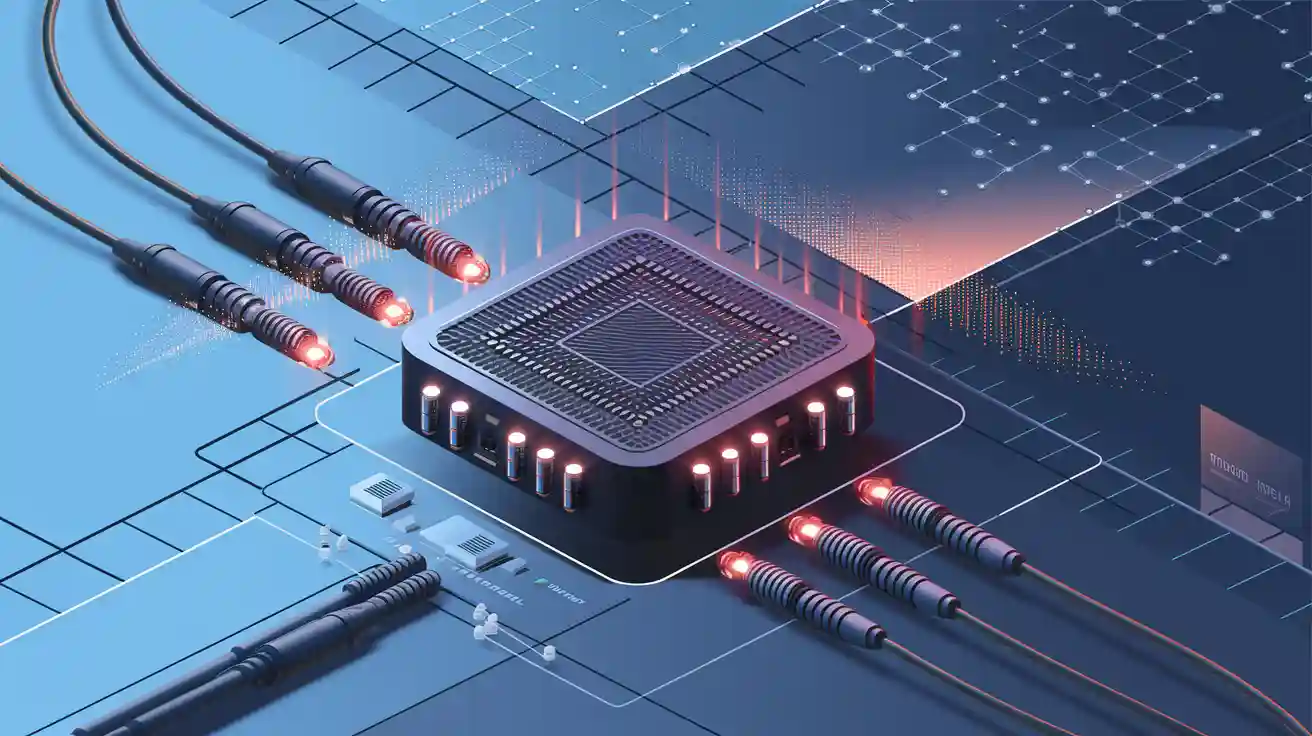Introduction
The Receiver Optical Sub-Assembly (ROSA) is a critical optoelectronic component in optical communication systems, responsible for converting incoming optical signals into electrical signals. As the receiving counterpart to the TOSA (Transmitter Optical Sub-Assembly), ROSA ensures high-fidelity signal detection and plays a vital role in determining the sensitivity, bandwidth, and reliability of optical transceivers. This article delves into the intricacies of ROSA, elucidating its components, operational principles, and significance in optical modules.
What is ROSA?
Definition:
An integrated optoelectronic module that performs optical-to-electrical (O/E) conversion in fiber optic transceivers. It consists of a photodetector, amplification circuitry, and signal-conditioning components.
Primary Functions:
Converts optical signals (light pulses) into electrical signals (current/voltage).
Amplifies weak photocurrent to usable signal levels.
Filters noise to maintain signal integrity.
Supports Digital Diagnostic Monitoring (DDM) for real-time performance tracking.
Core Components of ROSA
A typical ROSA comprises several key components, each playing a vital role in the optical-to-electrical conversion process:
1. Photodetector
At the heart of ROSA lies the photodetector, which captures incoming light signals and converts them into electrical currents. The two predominant types of photodetectors used are:
PIN Photodiode: Known for its simplicity and fast response time, the PIN photodiode is suitable for short to medium-distance transmissions.
Avalanche Photodiode (APD): Offering internal gain through the avalanche multiplication effect, APDs are ideal for long-distance applications requiring higher sensitivity.
2. Transimpedance Amplifier (TIA)
The TIA amplifies the weak electrical current generated by the photodetector, converting it into a usable voltage signal. This amplification is crucial for maintaining signal integrity over varying transmission distances.
3. Limiting Amplifier
Post TIA, the signal may still exhibit amplitude variations. The limiting amplifier standardizes the signal amplitude, ensuring consistent logic levels for digital processing.
4. Optical Interface
This component ensures efficient coupling of the incoming optical signal into the photodetector. It often includes lenses or fiber stubs to align and focus the light accurately.
5. Housing
ROSA components are enclosed within a protective housing, typically made of metal or plastic. This enclosure shields the sensitive internal components from environmental factors and electromagnetic interference.
Operational Principle
The operation of ROSA is grounded in the photoelectric effect. When an optical signal enters the ROSA, it strikes the photodetector, generating a photocurrent proportional to the light intensity. This current is then amplified by the TIA, producing a voltage signal. Subsequently, the limiting amplifier ensures the signal maintains consistent amplitude levels, making it suitable for digital processing.
Applications of ROSA
ROSA modules are ubiquitous in various optical communication scenarios:
Data Centers: Facilitating high-speed data reception in servers and switches.
Telecommunication Networks: Enabling long-haul and metropolitan area network communications.
Passive Optical Networks (PONs): Serving as the receiving end in fiber-to-the-home (FTTH) deployments.
Enterprise Networks: Supporting high-bandwidth applications in corporate environments.
Advancements in ROSA Technology
Recent developments in ROSA technology focus on miniaturization, enhanced sensitivity, and integration:
Integration with TOSA: Combining TOSA and ROSA into a single Bi-Directional Optical Sub-Assembly (BOSA) for compact, bidirectional communication.
Enhanced Photodetectors: Development of photodetectors with higher responsivity and lower noise figures.
Advanced Packaging: Utilization of innovative packaging techniques to reduce size and improve thermal performance.
Conclusion
ROSA stands as a cornerstone in optical communication, ensuring the accurate and efficient conversion of optical signals into electrical form. ROSA technology is pivotal for modern optical networks, balancing sensitivity, speed, and cost across data centers, 5G, and DWDM systems. As bandwidth demands grow, innovations in APD gain, TIA noise reduction, and photonic integration will drive next-gen solutions. As technology progresses, ROSA continues to evolve, meeting the ever-growing demands of modern communication systems.


